(GatesofVienna) We will commemorate the events of five years ago by revisiting events of 323 years ago. This is a reference to, of course, to the other 9-11: September 11th, 1683, the day when an alliance of Christian armies led by Jan III Sobieski, the King of Poland, arrived at the Gates of Vienna.
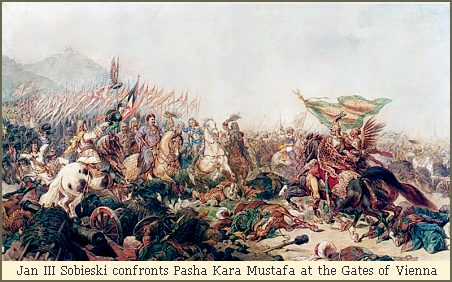
The Ottoman Empire had been expanding into Europe ever since Constantinople fell to the Turks, and even before that. Wherever the Muslim armies went, they plundered cities, took slaves, turned churches into mosques, and converted many thousands of Christian captives to Islam at the point of a sword.
The Sultan’s armies overran Greece, Bulgaria, Romania, and Serbia. They turned Protestant Hungary into a compliant vassal and made war repeatedly on Austria and the Polish-Lithuanian Commonwealth. The Ottomans had designs on Vienna, since the fall of the city would open the way into the heart of Austria and the rich principalities of southern Germany.
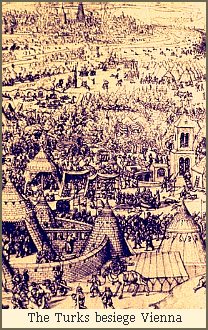
On July 16th, 1683, the second siege of Vienna began. The tiny garrison in the city was no match for Kara Mustafa’s army of 140,000, but the Grand Vizier decided to starve the city into submission rather than attempt a frontal assault on its defenses.
* * * * * * * * * * * * * * *
One of the main reasons the Turks had had such success in the Balkans and Eastern Europe was that their Christian enemies were unable to unite against them. Since the Caliphate and the Ottoman Empire were one and the same thing, Islam experienced no such fractiousness, and it was a united horde that advanced inexorably through the mountain passes and across the plains towards Vienna.
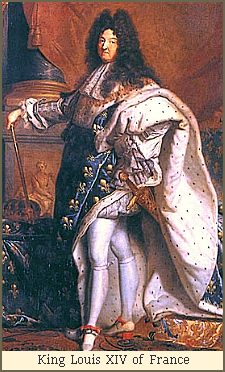
All of these squabbling political entities were Catholic, and theoretically united under the leadership of Rome. Pope Innocent XI recognized the danger posed by the Ottomans, and, in the name of God and the Church, called on all the rulers of Central Europe to unite against the common foe and save Vienna.
Louis XIV declined to obey his pontiff, and continued his scheming.
Jan Sobieski, on the other hand, was ready to answer the Pope’s call. However, in order to go to war, Polish law required him to get the unanimous approval of the Polish Diet. The French king’s ambassador plied members of the Diet with massive bribes to induce them to vote against Sobieski’s venture. Through most of the summer it seemed that Sobieski would be unable to ride to Vienna.
Fortunately for the Austrians, and for Christendom, Pope Innocent authorized the papal nuncio in Kraków to use the full resources of the Vatican. The nuncio was able to outbid Louis in bribery, but only barely. In the end the Diet reached unanimity and authorized their King to ride to the relief of Vienna.
* * * * * * * * * * * * * * *
When the King of Poland set off for Vienna in early September, the Viennese garrison was in desperate straits. The people of the city were starving, and the city had suffered serious damage from the Turkish bombardment.
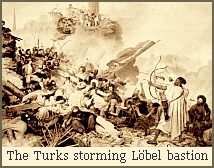

The Austrians and Germans attacked the Turks first at the center and on the left flank. The Turks counterattacked, but held back a significant portion of their forces in anticipation of entering the city through a breach in the wall. That very morning the Grand Vizier had prepared a second and more powerful charge to be set off under the Löbel bastion, one that would throw the city open to the Turkish forces once and for all.
Unfortunately for Kara Mustafa, the Austrians within the city had mounted a counter-tunneling operation. The Austrian “moles” detected the Turkish mine, found the charge, and defused it.

The battle was over in three hours. The King drove through the Turkish lines, and, seeing his success, the Vienna garrison sallied forth from the city and hit the Turks from the rear. Demoralized by these attacks and their failure to breach the wall, the Turks fled eastwards in haste, abandoning their tents, weapons, battle standards, provisions, and slaves.

And what became of the principals?
Pasha Kara Mustafa was executed in Belgrade later that year, paying the ultimate price for his monumental failure. Jan Sobieski returned to Poland a hero. Austria gradually regained its lost territories, and then some.
And King Louis continued his campaign against the German states: in the absence of their defenders, Luxembourg and other small German states were unable to resist, and were annexed by the French.
Over the long term, good relations between Poland and its neighbors to the west did not last; with the ebbing of the Turkish threat the old enmities returned. Barely a century later Austria, Prussia, and Russia presided over the final partition of Poland, and the Polish state ceased to exist until it was reborn at the end of the Great War in 1918.
* * * * * * * * * * * * * * *
What is striking about Jan III Sobieski is the quality of his leadership. More important than arms, manpower, tactics, supplies, and even courage, leadership is what makes the difference in any war. When Jan Sobieski led his men down that hill into the Ottoman flank, it was his presence at the front of the charge that demonstrated his dauntless nature and absolute determination. Character cannot be faked, and men who recognize this kind of character in their leader will follow him into the gates of Hell.
The raising of the siege of Vienna puts me in mind of another conflict, a hemisphere and almost two centuries away from Vienna in 1683.
As the Russian and Austrian empires were pushing the Ottomans ever further back in the mid-19th century, the young American republic was in the throes of its major existential crisis, the War Between the States, a.k.a. the American Civil War.
The character of leadership in the Civil War was much in evidence. The armies of the North greatly outnumbered the those of the South, and the North was better supplied, technically more advanced, and better armed.
Yet in the early part of the war the vast Union army commanded by General George McClellan was unable to make significant advances against a much smaller and poorly-supplied Confederate army. This stalemate reflected the character of McClellan, who was a weak, vacillating, and vain commander.

In the Romney campaign, just after New Year’s in 1862, Jackson had been given an objective which required his men to make long marches in abominable weather to the upper reaches of the Potomac, in what is now West Virginia.
Here is the account of an incident in the Romney campaign as recalled byBrigadier-General John D. Imboden:
In that terrible winter’s march and exposure, Jackson endured all that any private was exposed to. One morning, near Bath, some of his men, having crawled out from under their snow-laden blankets, half-frozen, were cursing him as the cause of their sufferings. He lay close by under a tree, also snowed under, and heard all this; and, without noticing it, presently crawled out, too, and, shaking the snow off, made some jocular remark to the nearest men, who had no idea he had ridden up in the night and lain down amongst them. The incident ran through the little army in a few hours, and reconciled his followers to all the hardships of the expedition, and fully reestablished his popularity.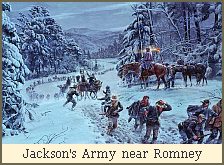
Now, that’s leadership.
Other parts of Stonewall Jackson’s career are reminiscent of Sobieski. Like the Polish King, the Confederate General routed a numerically superior force in the battles of Front Royal and Strasburg, and sent the Federals fleeing northwards in haste, leaving their baggage, artillery, and wagon train behind.
Jackson, seeing the chance of a breakthrough to the Potomac, followed the Union troops down the Shenandoah Valley towards Winchester. When he realized that by tactical audacity he could spare his soldiers a real fight and gain his objective, he pushed them to the limits of their endurance in order to reach Winchester before the Union troops could get there.
Bevin Alexander tells the story in Lost Victories: The Military Genius of Stonewall Jackson (p. 68):
Most of all Jackson wanted to seize a commanding hill southwest of Winchester to prevent the Federals from occupying it in force and with artillery. He drove his soldiers onward deep into the night. At about 1 A.M. on May 25, the chief of the Third Brigade of Jackson’s division, Col. Samuel V. Fulkerson, suggested that the men be allowed to rest for an hour or two.
“Colonel,” Jackson replied, “I yield to no man in sympathy for the gallant men under my command; but I am obliged to sweat them tonight that I may save their blood tomorrow.” The army, he said, had to be in position below the Winchester hills by daylight. “You shall, however,” Jackson added, “have two hours’ rest.”
The column halted. Thousands of Rebel soldiers slumped in their tracks and fell asleep in the road.
At 4 A.M. on Sunday, May 25, Jackson, who’d kept watch as his men slept, passed the word down the column for the men to arise. They quickly got under arms and were on their way.
He kept watch as his men slept. It’s no wonder that his men were willing to follow him into the gates of Hell: he endured anything that they endured, and more.
Like Sobieski, Jackson was always in the van. He was returning from the battle near Chancellorsville in 1863 when a Rebel bullet fired in error caught his arm. He lost his arm, and then his life, and the South lost the war.
* * * * * * * * * * * * * * *
Stonewall Jackson was a tactical and strategic genius, as proved by his repeated successes against a numerically superior foe. His moves, like Hannibal’s, will be studied by tacticians for as long as men make war against one another.
But it was his character, the quality of his leadership, that defined who he was. It’s possible for such a leader to lose a war, but an army that lacks that kind of leadership will find it almost impossible to win.
The nature of war has changed so much in the last century and a half that it is no longer possible for commanding generals to lead their men in the field. Even if they wished to do so, it would not have the tactical significance that it did when Jan Sobieski could lead a cavalry charge down a hillside against an enemy force more than four times as large as his own.
But still… One longs to see that kind of character in our leaders. We got a glimpse of it from Rudy Giuliani in the days after 9-11, and when the President grabbed a bullhorn and climbed the pile of rubble at Ground Zero. But these days it’s mostly soundbites and press conferences and position papers and policy meetings — the very nature of leadership has changed.
To be sure, down at the platoon and company level in Iraq and Afghanistan the same kind of inspirational leadership is exhibited every day, with the lieutenants taking a higher rate of casualties than any other rank. The milbloggers see to it that we’re all aware of it. But at the brigade level such actions are no longer possible.
* * * * * * * * * * * * * * *
Long after the end of the conflict, Col. G.F.R. Henderson gave his assessment of Jackson’s uncanny genius:
He learned, too, to put himself into his adversary’s place and to realise his weakness. He learned, in a word, that war is a struggle between two intellects rather than the conflict of masses; and it was by reason of this knowledge that he played on the hearts of his enemies with such extraordinary skill.
The war we are in right now is an information war, as described so masterfully byOwen Johnson in his recent articles on Shrinkwrapped’s blog. In the conclusion of the series, Mr. Johnson says this:
In this war there are no noncombatants. Not only are we all military targets in the eyes of our enemies, but we all take part in the fighting. Every opinion we form and express, every conclusion and argument we make, and particularly every vote we cast, influences our enemy and affects our collective will. We need to be aware of this.
And that’s why I’m here, writing this. Any effect I can have on the events of our time will be miniscule at best. But when there are many thousands of us doing the same thing…
If war is a struggle between two intellects, and if this is an information war, then the intellectual battle isn’t between General Franks and Saddam Hussein. It isn’t even between George W. Bush and Mahmoud Ahmadinejad.
It’s between Katie Couric and Osama bin Laden.
It’s between Pinch Sulzberger and Ayman al-Zawahiri.
Anyone want to place bets on these contests?
But there’s a lot of informational cannon fodder out there in this war, and a lot of potential character ripe for leadership. People like Wretchard and James Lileksand Mark Steyn are out there, providing clarity of thought and insight that is sorely lacking among our leaders and in our media. When things get bad enough, people like them will arise naturally as leaders, because that is when we will need them.
When the time of trouble gets here, a virtual Holger Danske will emerge from the cellars of Kronborg, shake the cobwebs out of his beard, put on his helmet, pick up his sword, and take up once again the defense of the Realm. Charles Martel will pick up his hammer and enter the fray. Jan III Sobieski will rise up from his bed of rest, rouse the Winged Hussars, and lead a cavalry charge down the information highway. A Stonewall Jackson of the blogosphere will emerge, scratch his red beard, look deeply into the mind of the enemy, and discover how to use his weaknesses to overcome him.
On a bright September morning in 1683 the tide of the second wave of the Great Islamic Jihad turned and began to ebb.
On a bright September morning in 2001, the tide of the third wave of the Great Islamic Jihad was at its flood.
But this tide will turn, too. Sobieski is out there, waiting to be awakened and ready for the call to raise the siege at the Gates of Vienna.









